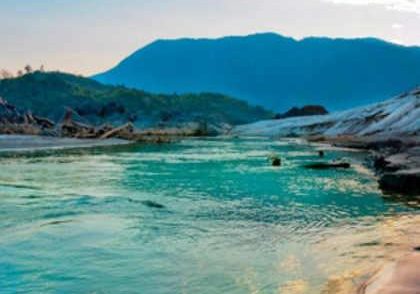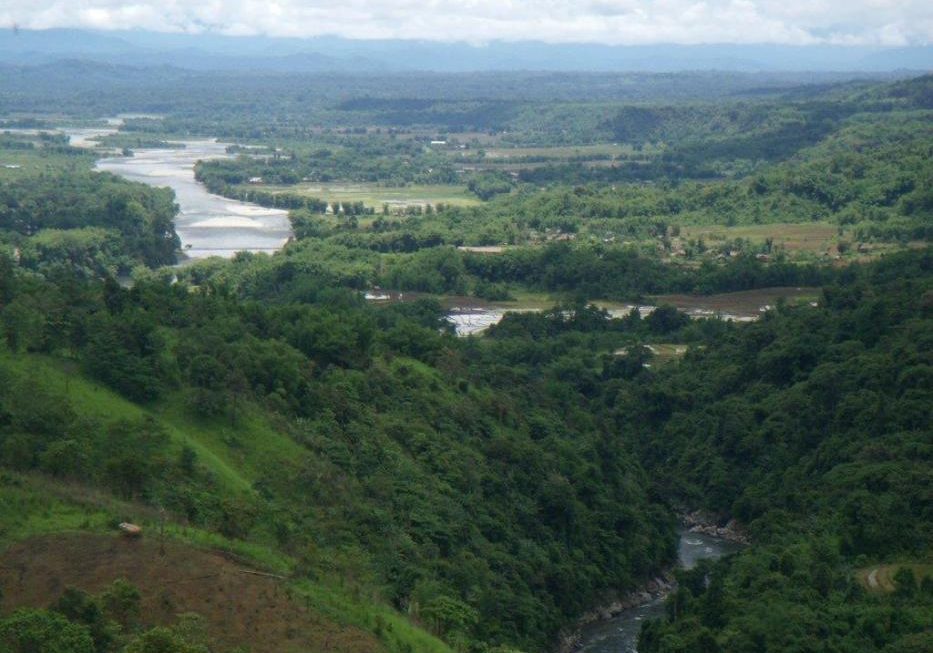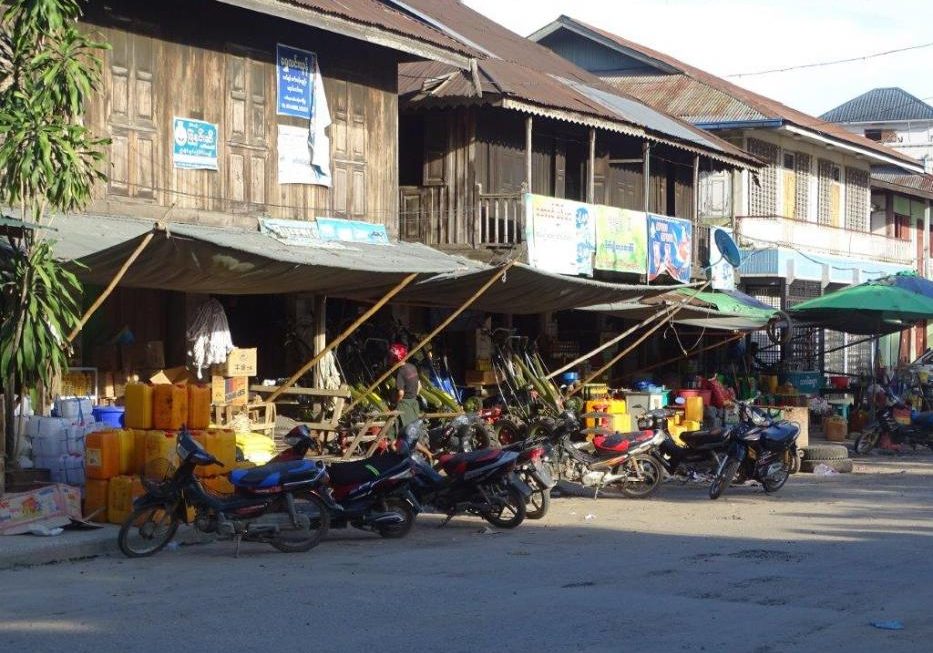Extreme N Myanmar. It is a mountainous region bounded on the NW by India and on the N and E by China and traversed by tributaries of the Ayeyarwady River. Myitkyina, the capital, and Bhamo are the chief towns. Rice and sugarcane are grown, jade and amber mined, and timber and bamboo cut. The state is sparsely populated; Jinghpaw-speaking Kachins constitute the largest group. They maintain tribal forms of organization under chiefs, practice shifting cultivation, and are mostly animists or Christians. The territory was never subject to the Burman kings, and after the establishment of British rule it was governed directly, not as part of British Burma. The territory was invaded (1945—47) by the Chinese, but a border agreement was signed between Myanmar and China in 1960. Antigovernment insurgents, active in Kachin State since Myanmar achieved independence in 1948, signed a cease-fire agreement with the government in 1993.
How to get there
You can fly from Yangon and Mandalay to Myitkyina, there are also daily trains via Kathar to Myitkyina (appr. 24 hours), or you can take a boot the Ayeyarwaddy River up to Bhamo, or you can also travel by car from Mandalay via Lasio and Muse to Bhamo (2 days with an overnight stop at Muse.
Places of interest
MYITKYINA
Myitkyina is the capital and centrally located in the Kachin State. It is the northern most railway terminal, 919 miles from Yangon and 487 miles from Mandalay. Visitors can tour the Myit Sone, the confluence of Maikha and Malikha Streams. Ayeyarwady, the most useful river in Myanmar has its source from this confluence and flows 1325 miles to the mouth of the river. The water over here is crystal clear. The panoramic view of the scenario at Myit Sone with the unspoiled beauty of nature is beyond the expression of words and will definitely be a fine attraction to tourists. Myitkyina can be reached by road, rail, river and air. Different tribes of national races live in harmony with their own cultures, customs, dialects, dances and lifestyles. The glittering costumes with silver trinkets of the charming Kachin belles would be an enchanting sight. For souvenir the Kachin woollen bag with silver trinkets would be a memorable gift. The overland trade route to India and China and World War II supply line to China along the Ledo Road pass through Myitkyina.
At the edge of the town, by the banks of the Ayeyarwaddy, gold-painting and mining goes on relentlessly day and night. Abotu 25 miles to the north of the town, is some of Myanmar's most beautiful and important natural beauty spots, in the cradle of the Ayeyarwaddy, where Maykha and Malikha rivers meet, usually called the Myit-son.
INDAWGYI LAKE
2 ½ hours south of Myitkyina, is the largest inland lake of Southeast Asia. The lake is 8 miles east to west, and 15 miles north to south. There are over 20 villages around the lake. The predominant ethnic groups living in the surroundings of the lake are the Shan and the Kachin, whom mainly practise agriculture. Indawgyi Lake is within the confines of Indawgyi Lake Wildlife Sanctuary, which was established in 1999 by the Ministry of Ecotourism. The sanctuary, which is 300 square miles, contains a variety of animal species, including rare mammals and birds.
PUTAO
Situated in the north of Myitkyina, the capital city of Kachin state, can reach only by air route from Yangon, Mandalay and Myitkyina. The city surrounded with snow peaked mountains and the weather is cold around the year. Flora and Fauna can be seen in the forest around Putao. There are also many different ethnic minority tribes in Kachin state. It is the nearest town to the base camp for Climbing Mt. Khakhaborazi (5889 metres), which is the highest mountain in Myanmar and in Southeast Asia. Putao is the starting point for Myanmar's most adventurous trekking adventures.
Flowing streams and rivulets, straw-roofed houses and fences of pebbles and creek stones provide a pleasant, pastoral contrast to the scenes and sights of modern cities. The suspension bridges are the typical river crossing in this region. People of the Rawan, Lisu, Khamti-Shan, Jingphaw and Kachin are represented in the region. This area is famous for its Nature of originated Flora, especially there are many various kinds of orchids and even the world rarest Black orchids can be found in this area. And for fauna, one of the rarest animal species, Takin (Budorcas Taxicolor), Red Panda (Ailurus Fulgens), Black Bears, Black Deer, are all endemic to this region.
Other terrestrial species of Monkeys, Boars, Mountain Goats can also seen on this region. Various kinds of Butterflies can be seen in this area on the month of January. The Butterflies including such as an endangered species can be found, among them are Kaiser, Apollo, Bhutan, Glory and Birdwings.
The trees such as different colors of Rhododendrons, Maple trees and various kinds of Bamboos are also seen in this area. The month of January and April is the best month to see the butterflies, flowers and orchids in the icy forest.
BHAMO
Is located 186 km south from the capital of Myitkyina. It is on the Ayeyarwady River, and is the nearest river port to the Chinese border. The population is a mix of Chinese and Shan, with Kachin peoples in the hills around the town. Bhamo was once called Sampanago, and was the capital of a now-extinct Shan kingdom of Manmaw. The ruins of the old city walls still exist, some 5 km from the modern town.




